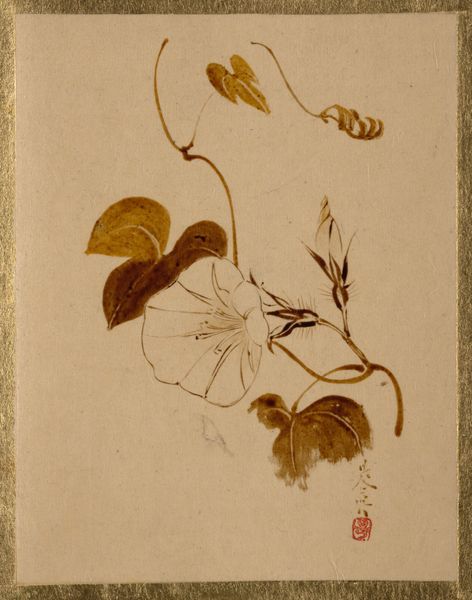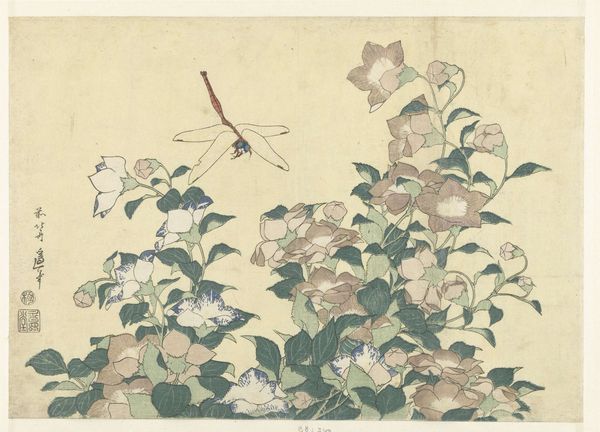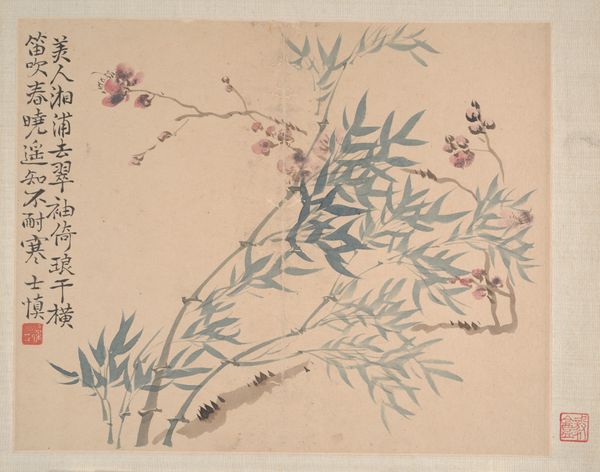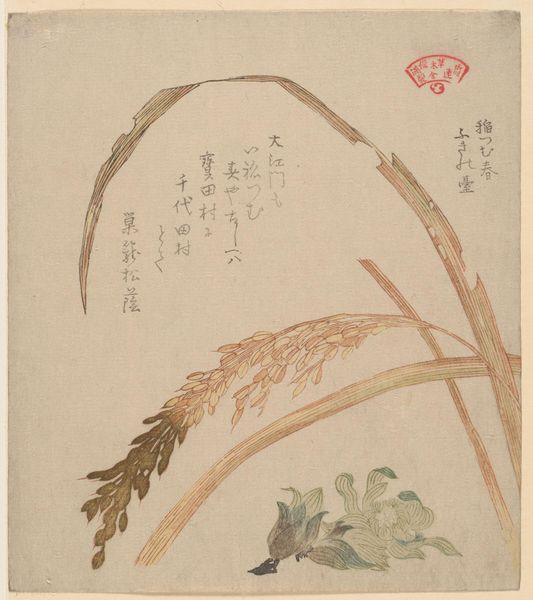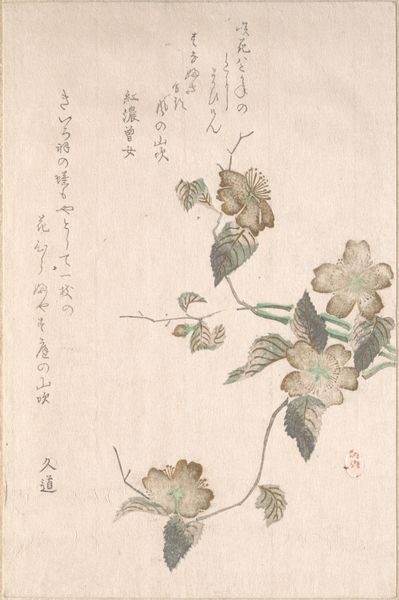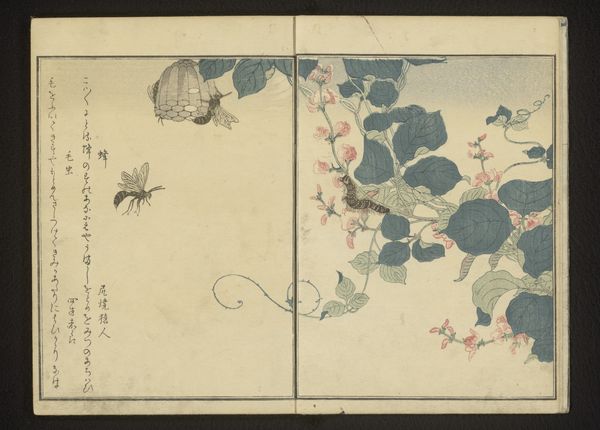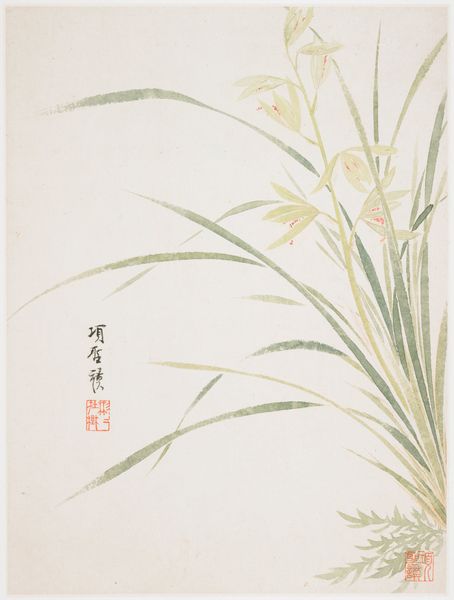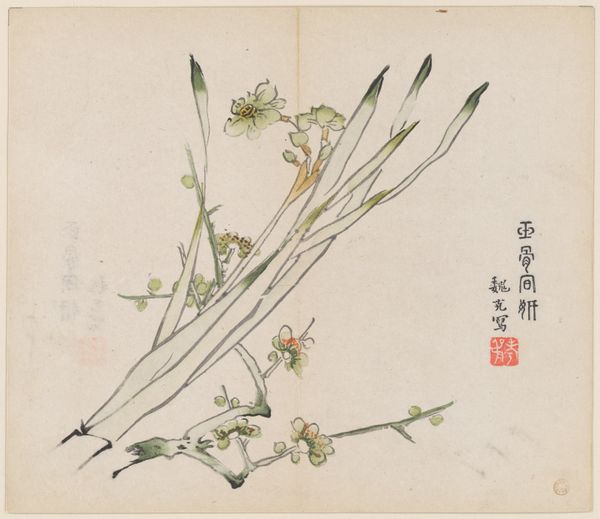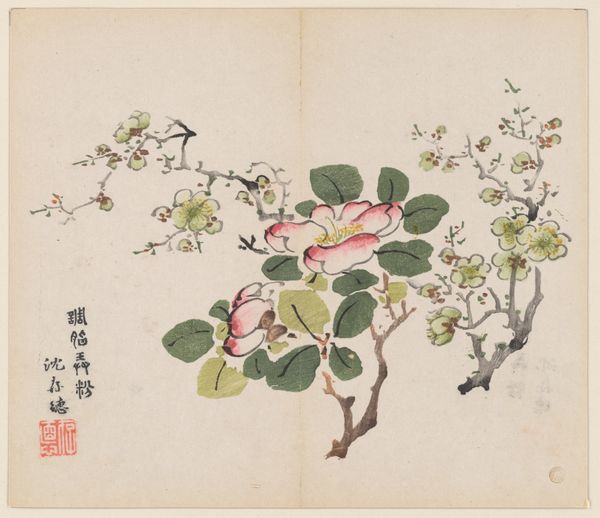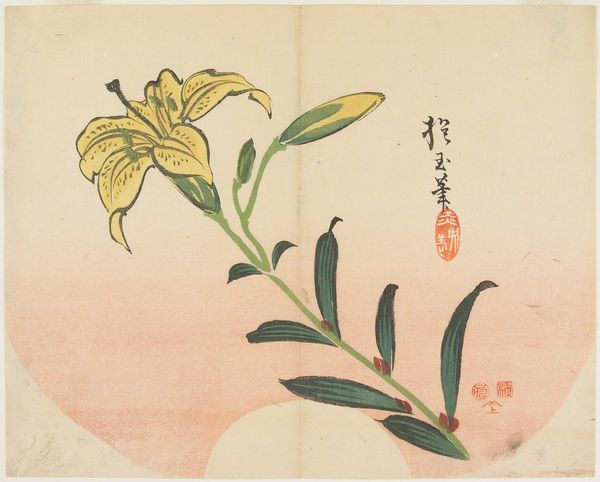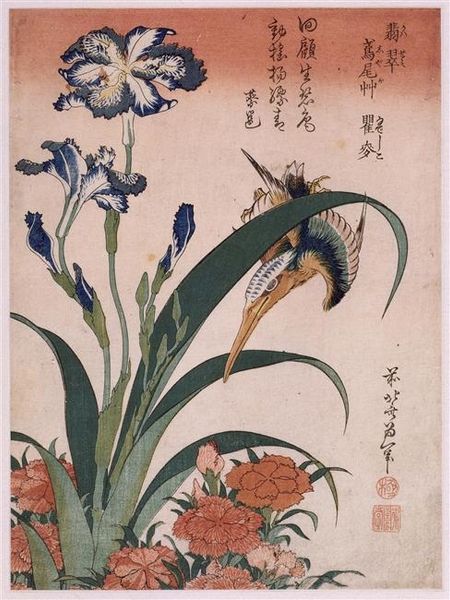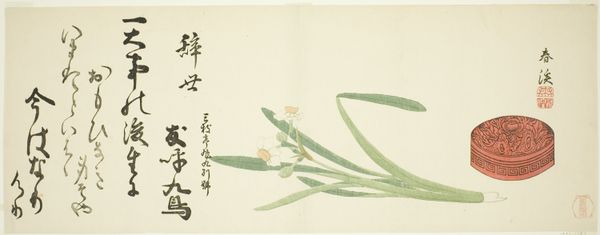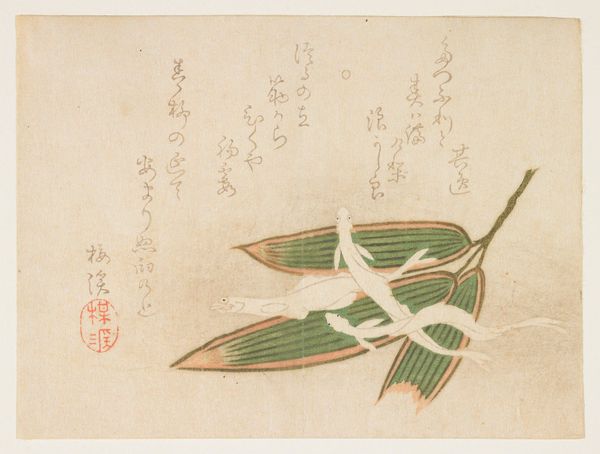
Lacquer Paintings of Various Subjects: Grasshopper on Gourd Vine 1882
0:00
0:00
Dimensions: 7 1/2 x 6 1/2 in. (19.1 x 16.5 cm)
Copyright: Public Domain
Editor: We're looking at "Grasshopper on Gourd Vine," a painting by Shibata Zeshin from 1882. I'm struck by how detailed and delicate the insect is, almost like a scientific illustration. What's your take on this, considering the time it was made? Curator: Well, consider the Meiji period, when this was created. Japan was rapidly modernizing and opening to the West. Zeshin was deeply invested in preserving traditional techniques, like lacquer, while adapting them to appeal to new audiences. His attention to detail isn't just aesthetic; it's a statement about valuing traditional craftsmanship in a changing world. How do you think displaying insects contributes to his statement? Editor: I guess it's like he's saying even the smallest parts of the natural world deserve respect, which ties into a broader appreciation for Japanese artistic heritage? Curator: Precisely. The gourd vine is also significant, often representing prosperity and abundance. Zeshin is creating a visual narrative that intertwines nature, culture, and aspiration. The very act of creating lacquer paintings was becoming increasingly political. Was he not elevating the cultural value in a modernising nation? Editor: So it's more than just a pretty picture; it’s also a commentary on Japan's cultural identity during that period? I didn't consider the social and historical context when I first saw it! Curator: Indeed. He’s consciously choosing subjects that resonate with traditional values while embracing the influence of Western naturalism, therefore bridging past and present. I hope now you are closer to answering that key question. Editor: This gives me a much deeper understanding of what Shibata Zeshin may have wanted to share through his work. Now I see the historical meaning hidden inside what seemed to me a purely botanical and zoological study. Curator: It seems so! His work serves as a visual bridge. He helps to negotiate tradition within modernisation; offering commentary on socio-political ideas of Japan during the Meiji period.
Comments
No comments
Be the first to comment and join the conversation on the ultimate creative platform.
